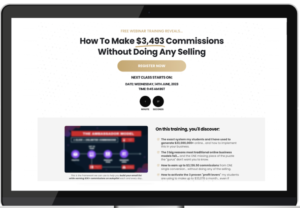Small Business Oli Gardner Strategies

Navigating the world of small business can feel like steering a ship in stormy seas. Did you know renowned online marketer, Oli Gardner has outlined some key strategies that could be your guiding beacon to success? This article will unravel these innovative techniques and explain how they can boost your growth, increase conversions and set your venture apart from competitors.
Get ready to chart a new course for your small business!
7 Strategies for Small Business Success by Oli Gardner
Oli Gardner shares seven key strategies for small business success.
“Laser-Focus” On Your Niche
Identifying and concentrating on your specific niche is crucial for small businesses. This means understanding who your customers are, what they need, and how you can provide solutions to their problems better than anyone else out there.
The narrower the focus, the less competition you will face. Not only will this help to attract a more loyal customer base, but it also lets you become an authority in that field. Businesses that try to cater to everyone often end up appealing to no one in particular.
Therefore, staying laser-focused on your unique area of expertise helps drive success for small businesses.
Investing in Your Talent
Investing in your talent is a crucial strategy for small business success. By hiring and developing skilled employees, you can build a strong team that is dedicated to helping your business grow.
Offering training opportunities and providing ongoing support will not only improve employee satisfaction but also increase productivity and efficiency. When you invest in your talent, you are investing in the future of your business, ensuring that you have the right people with the right skills to take it to new heights.
Developing a talented workforce doesn’t stop at recruitment; it also includes creating a positive work environment where employees feel valued and motivated. Recognizing their achievements and offering competitive compensation packages can help retain top talent.
Additionally, fostering a culture of continuous learning and development enables your employees to stay ahead of industry trends, ensuring that they are equipped with the knowledge needed to provide exceptional service or create innovative products.
Building a Strong Brand
Building a strong brand is essential for the success of any small business. A strong brand helps to establish credibility, build trust with customers, and differentiate your business from competitors.
By creating a consistent visual identity, including a logo, color palette, and typography, you can make your brand easily recognizable and memorable. It’s also important to develop a clear and compelling brand message that communicates the unique value proposition of your products or services.
Additionally, building a strong online presence through social media platforms and website optimization can further enhance your brand visibility and reach. Overall, investing in building a strong brand can greatly contribute to the long-term growth and success of your small business.
Delivering on Your Promises
Small businesses often thrive on their reputation and the trust they build with their customers. One key aspect of building that trust is delivering on your promises. Whether it’s a product or service, ensuring that you follow through on what you have promised is essential for maintaining customer satisfaction and loyalty.
By consistently meeting or exceeding expectations, you not only build trust but also establish a positive reputation in your niche. This can lead to repeat business, referrals, and word-of-mouth recommendations which are crucial for the long-term success of any small business.
Letting Your Audience Write for You
Engaging your audience in the content creation process can be a powerful strategy for small business success. By letting your audience write for you, you not only gain valuable insights and perspectives, but also foster a sense of community and ownership among your customers.
Encourage user-generated content by inviting them to share their stories, testimonials, or opinions through social media platforms or blog comments. This approach not only helps generate fresh and authentic content but also builds trust and credibility with your target audience.
Engaging with your audience in this way strengthens the bond between you as a brand and them as loyal customers or followers.
The Importance of Conversion-Centered Design
Conversion-centered design is crucial for small businesses as it helps create a focused and clear call to action, maintain consistency in branding, and highlight the benefits of products or services.
Understanding the Principles of Conversion-Centered Design
Conversion-Centered Design is a crucial concept for small businesses looking to optimize their websites and increase conversions. It involves crafting the design of your website in a way that guides visitors towards taking desired actions, such as making a purchase or filling out a form.
The principles of Conversion-Centered Design include creating focus and a clear call-to-action, designing an effective information hierarchy, maintaining consistency across branding, and highlighting benefits to draw attention.
By implementing these principles, small businesses can create engaging and user-friendly websites that convert visitors into customers.
Creating Focus and a Clear Call to Action
To create focus and drive actions from your audience, it’s crucial to employ a clear call to action. Your call to action should be easily noticeable and compelling, prompting visitors to take the desired action on your website or landing page.
Use concise and persuasive language that clearly communicates what you want them to do, whether it’s making a purchase, signing up for a newsletter, or contacting you for more information.
By creating focus and providing a strong call to action, you can effectively guide your audience towards conversions and achieve your business goals.
Designing an Effective Information Hierarchy
Designing an effective information hierarchy is crucial for small businesses looking to optimize their website and drive conversions. By organizing the content in a strategic manner, businesses can ensure that visitors easily find the information they need and are guided towards taking action.
This involves prioritizing key elements such as the call to action, highlighting benefits, and creating clear sections with concise headings. With a well-designed information hierarchy, small businesses can deliver a seamless user experience that maximizes engagement and ultimately leads to increased customer acquisition and sales.
Maintaining Consistency Across Branding
Consistency is key when it comes to branding your small business. By maintaining a consistent brand image across all channels, you establish trust and recognition with your audience.
This means using the same colors, logos, fonts, and messaging in all of your marketing materials, from your website to social media profiles to print ads. Consistency also extends to how you communicate with customers – whether it’s through email newsletters or customer support interactions.
When everything looks and feels cohesive and unified, potential customers are more likely to remember and choose your brand over others.
Highlighting Benefits and Drawing Attention
To effectively engage your audience and convert them into customers, it is crucial to highlight the benefits of your products or services while drawing their attention with compelling design elements.
By clearly showcasing how your offerings can improve their lives or solve their problems, you create a strong incentive for them to choose your business. Utilize captivating headlines, eye-catching visuals, and persuasive copy that speaks directly to your target market’s needs and desires.
Additionally, consider using color theory and attention-grabbing techniques to guide their focus towards the most important information on your website or landing pages. This strategic approach will help you stand out from competitors and increase the likelihood of conversions for your small business.
Applying Conversion-Centered Design to Small Business Strategies
Implement a focused and clear offer, design landing pages with flow and structure, consistently represent branding across channels, showcase product or service benefits, and utilize attention-grabbing techniques.
Implementing a Focused and Clear Offer
Implementing a focused and clear offer is crucial for small businesses to attract and engage their target audience. By clearly communicating the value and benefits of your products or services, you can capture the attention of potential customers and increase conversions.
This involves crafting compelling messaging that speaks directly to your target market’s pain points and desires. Your offer should be easy to understand, avoiding any confusion or ambiguity.
By focusing on one specific solution or benefit, you can position yourself as an expert in your niche and differentiate yourself from competitors. Additionally, highlighting any unique selling propositions or special promotions can further entice customers to choose your business over others.
Designing Landing Pages with a Flow and Structure
Designing landing pages with a flow and structure is crucial for small businesses seeking to optimize conversions. By strategically organizing the elements on a landing page, businesses can guide their visitors towards taking desired actions, such as making a purchase or signing up for a newsletter.
A well-designed landing page should have a logical flow that leads the visitor from one section to another, while maintaining visual consistency and clarity. It should also prominently display clear calls to action that stand out and entice visitors to take immediate action.
By paying attention to the layout, color scheme, and overall design of their landing pages, small businesses can create an engaging user experience that maximizes conversion rates.
Consistently Representing Branding across Channels
Consistently representing your branding across all channels is crucial for small business success. When your customers see a consistent brand image, they’re more likely to trust and recognize your business.
This means using the same logos, colors, fonts, and messaging across all platforms – from your website to social media accounts to print materials. By maintaining consistency in your branding, you create a cohesive and memorable experience that helps build awareness and loyalty among your target audience.
So make sure every touchpoint reflects your brand identity consistently to reinforce who you are as a company at every opportunity.
Showcasing the Benefits of Products or Services
To effectively showcase the benefits of your products or services, it’s crucial to understand what sets them apart and how they can solve your customers’ problems. Highlight the specific advantages that make your offerings stand out from the competition.
Whether it’s saving time, increasing productivity, improving health, or enhancing quality of life, clearly communicate these benefits in a way that resonates with your target audience.
Use persuasive language and compelling visuals to capture their attention and spark their interest. By showcasing the value and advantages of your products or services, you’ll be able to attract more customers and drive business growth.
Utilizing Color Theory and Attention-Grabbing Techniques
Utilizing color theory and attention-grabbing techniques is essential when applying conversion-centered design to small business strategies. By understanding the psychology of color, businesses can strategically choose colors that evoke emotions and enhance their brand message.
Attention-grabbing techniques like bold typography, contrasting colors, and visual cues can draw the viewer’s eye to important elements on a landing page or website. This helps guide visitors through the desired conversion path and increases the chances of them taking action.
With a well-designed color scheme and attention-grabbing tactics in place, small businesses can effectively capture their audience’s attention and improve their conversion rates.
The Power of Conversion-Centered Design for Small Businesses.
Conversion-centered design holds immense power for small businesses. By implementing focused offers, designing flow-driven landing pages, maintaining consistent branding across channels, showcasing product benefits, and utilizing attention-grabbing techniques like color theory, small business owners can effectively optimize conversion rates and drive growth.
It’s time to harness the potential of conversion-centered design and watch your small business thrive.





Leave a Reply